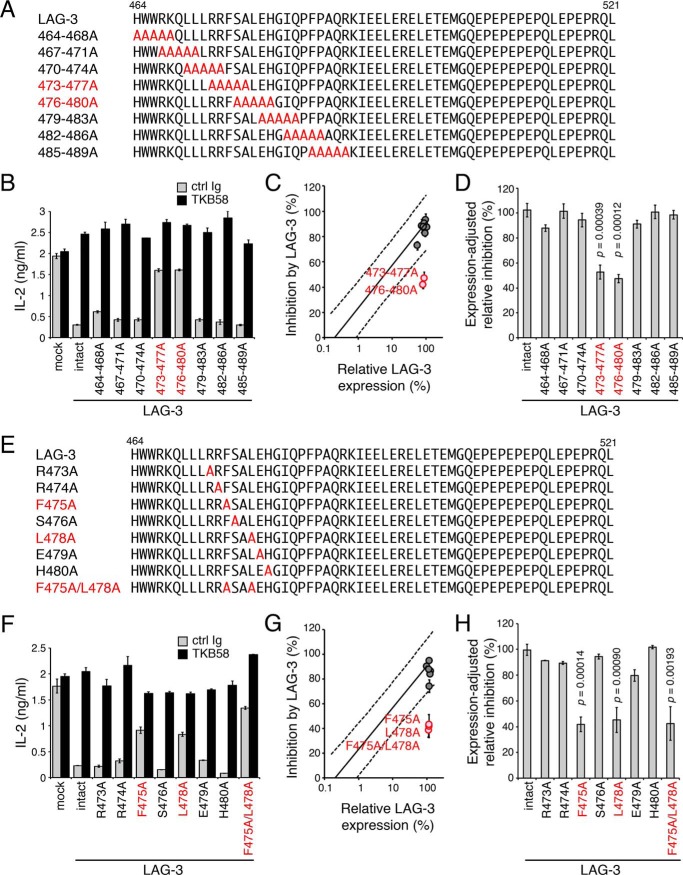Figure 5.
Requirement of the FXXL motif in the PR for the inhibitory function of LAG-3. A–D, defective inhibition of IL-2 production by LAG-3 with alanine substitutions at 473–477 and 476–480. A, amino acid sequences of the IC regions of LAG-3 and its mutants are shown. Substituted alanine residues and mutants with weaker function are colored in red. B, DO11.10 T cells expressing LAG-3 and its mutants were stimulated with pOVA-pulsed (1 μm) IIA1.6 cells in the presence of anti-LAG-3–blocking Ab (TKB58) or its isotype control (ctrl Ig). The concentration of IL-2 in the culture supernatant was determined by ELISA. C, the relative expression level and the inhibitory effect of LAG-3 mutants are plotted on the standard plot shown in Fig. 3D. LAG-3 mutants with weaker function are highlighted in red. D, the inhibitory effect relative to intact LAG-3 with the same expression level is shown for the indicated LAG-3 mutants. E–H, defective inhibition of IL-2 production by LAG-3 with alanine substitutions at 475 and 480. Amino acid sequences (E) and inhibitory function (F–H) of the indicated LAG-3 mutants are shown as in A–D. Data are the mean ± S.D. of technical duplicates in one representative experiment from three independent experiments (B and F) or the mean ± S.D. of three independent experiments (C, D, G, and H). p values comparing the expression-adjusted relative inhibition of indicated LAG-3 mutants with that of intact LAG-3 are shown (Student's t test, D and H).

